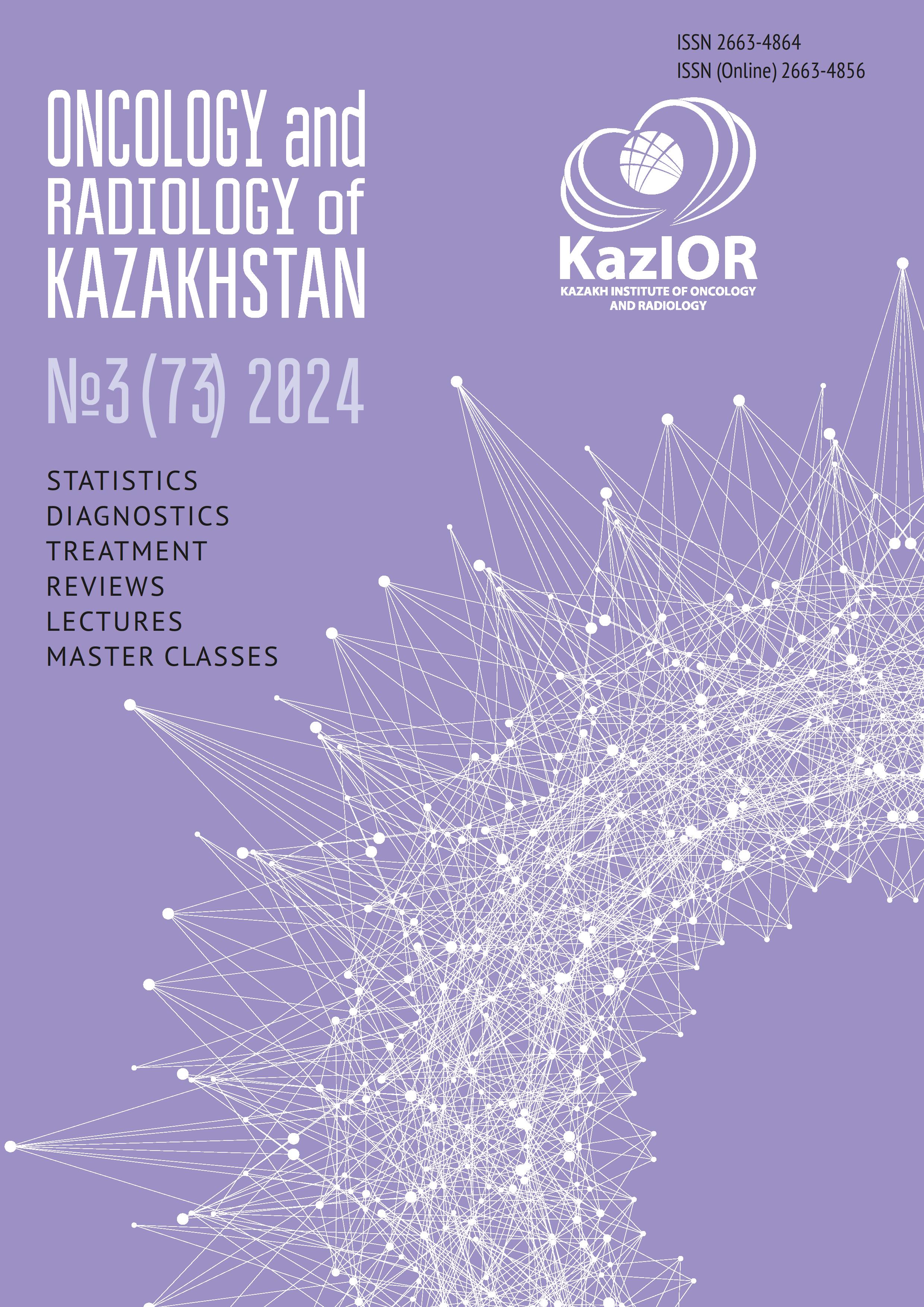THE POSSIBILITIES OF QUANTITATIVE ASSESSMENT OF SINGLE-PHOTON EMISSION COMPUTED TOMOGRAPHY IN THE DIAGNOSIS OF THYROID DISEASES
Keywords:
Thyroid gland, node, single-photon emission computed tomography (SPECT), radiopharmaceuticals, radiopharmaceutical accumulation, quantitative assessmentAbstract
Relevance: The main pathologies of the thyroid gland (TG) include hyperthyroidism, hypothyroidism, nodular goiter, autoimmune diseases (AIT), and cancer. An increase in morbidity from TG pathologies in the Republic of Kazakhstan requires more efficient diagnostic and treatment methods.
The study aimed to determine the diagnostic value of SPECT with sodium pertechnetate (99mТс) quantitative parameters in TG pathologies.
Methods: The study involved 112 patients. SPECT assessment of the TG was carried out using a Philips Forte gamma camera and a radionuclide drug – 99mТс. A boxplot diagram was used for statistical analysis of the results, with which the data was visualized, as well as SPSS software version 21.0 and Microsoft Office Excel.
Results: Of the 112 patients, 96 (85.7%) were women, and 16 (14.3%) were men. The participants were aged from 10 to 89 years, with a mean age of 50.9 years. The median administered activity of the 99mТс was 160 MBq. The analysis showed that the largest proportion of patients with SPECT studies of the TG were in the age group over 55 years (37.5%). Regarding the distribution of TG nodules, 47 (42%) patients had nodular formations, including 25 (53.2%) “hot,” 20 (42.6%) “cold,” and 2 (4.3%) “warm.” Classification of thyroid diseases in patients with nodular formation showed that 13 (27.7%) suffered from diffuse goiter, 19 (40.4%) had nodular goiter, 12 (25.5%) had AIT, and 3 (6.4%) patients had cancer. Analysis of the distribution of radiopharmaceutical accumulation in the TG depending on the diagnosis showed that the median accumulation of radiopharmaceuticals in cancer was 0.6, in AIT – 1.15, and in diffuse and nodular goiter – approximately 1.5 and 1.7, respectively.
Conclusion: Our study confirms the importance of quantitative SPECT parameters for understanding the various manifestations and pathological processes in the TG. Future research may improve diagnostic and treatment strategies for this disease by further exploring the relationship between these parameters and various forms of TGC.

